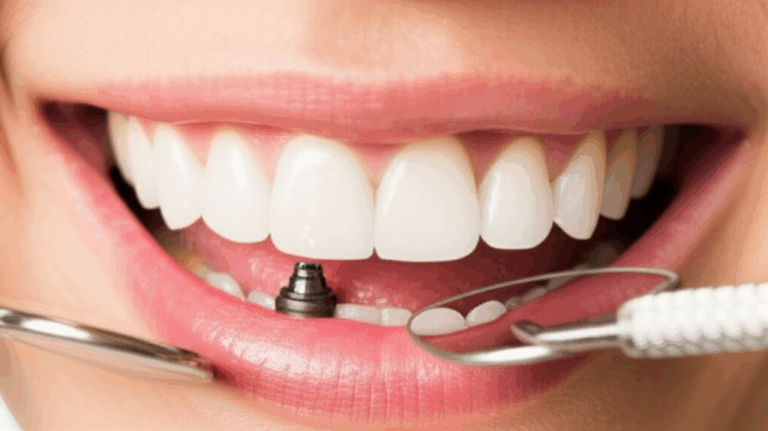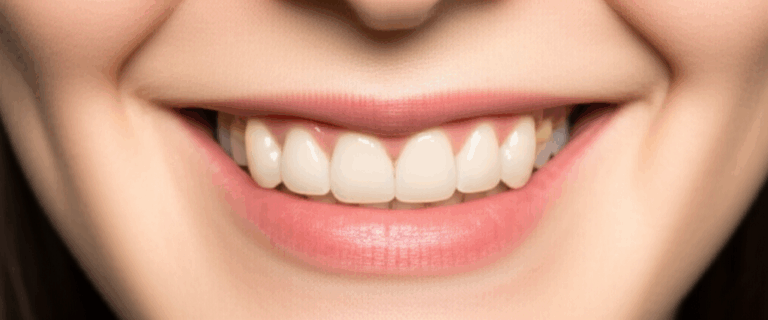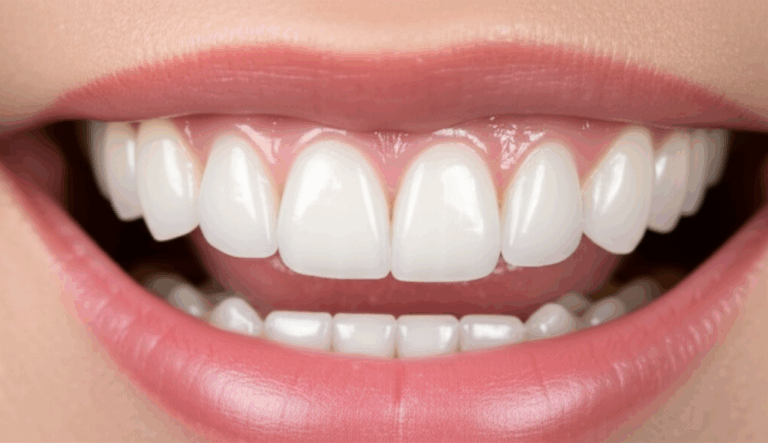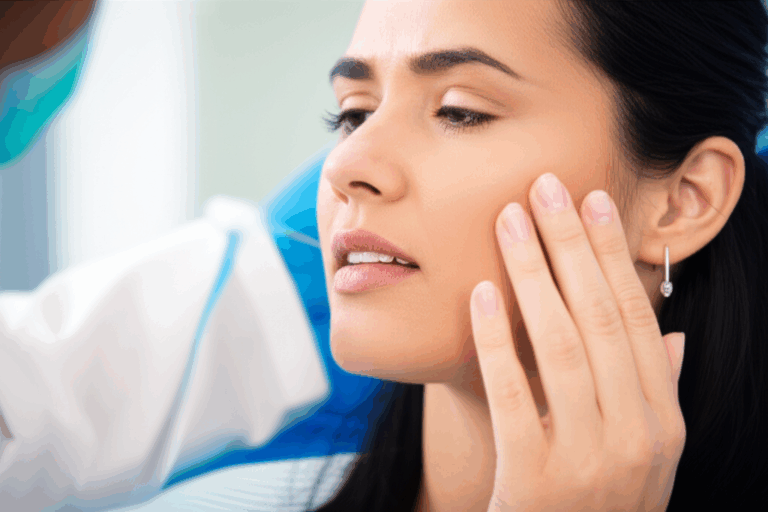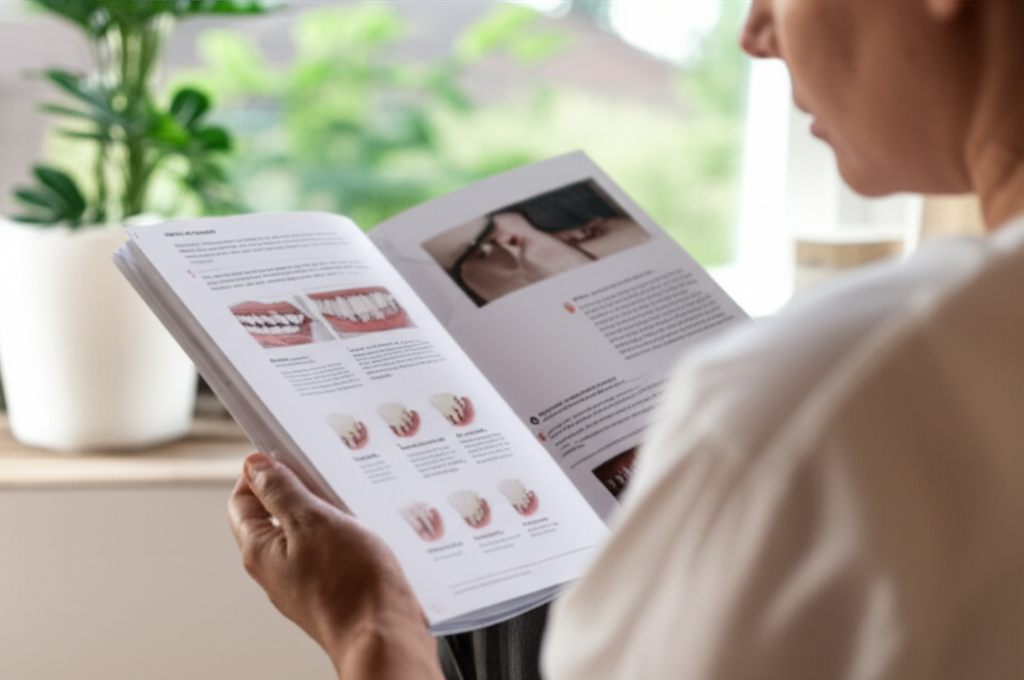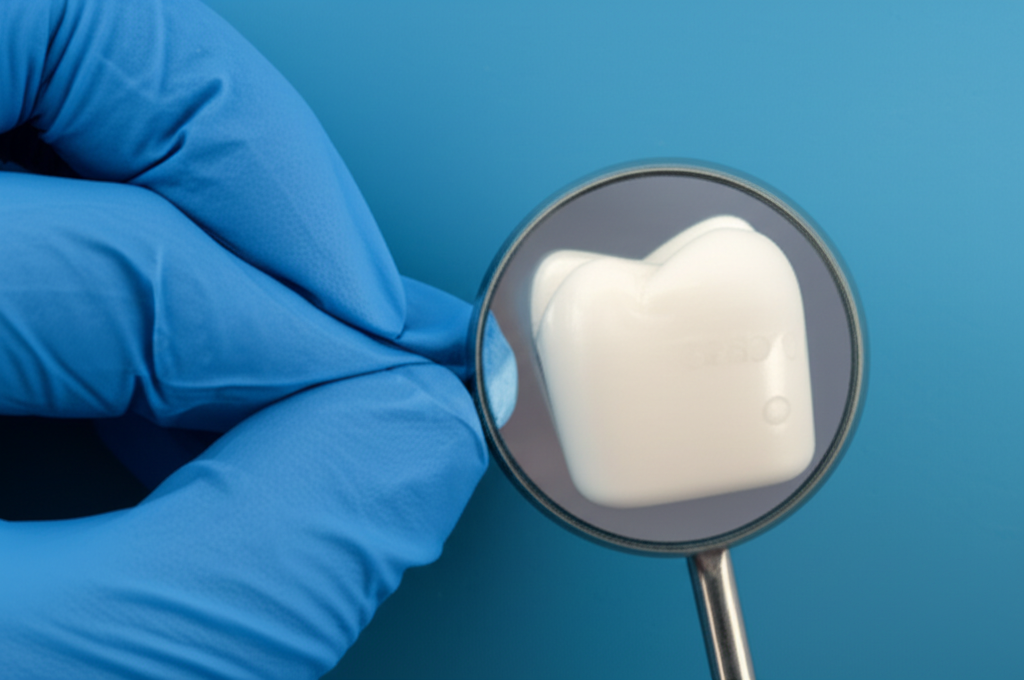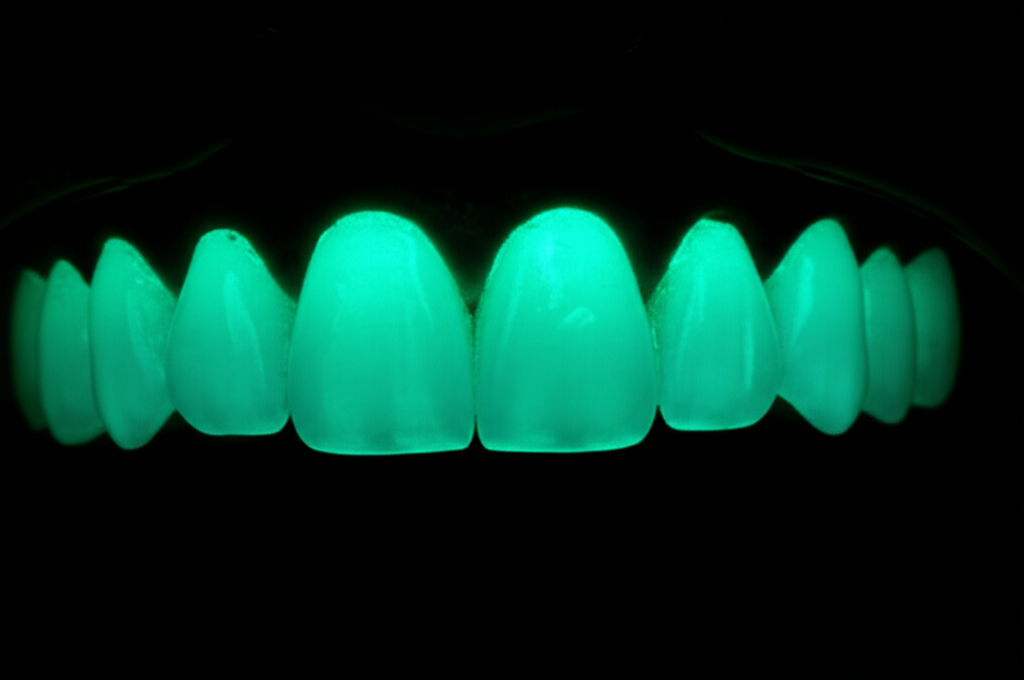
Do Veneers Glow in the Dark? Understanding Light, Aesthetics, and Your Smile
That time you walk into a club, the lights go purple, and suddenly your teeth—or someone else’s—seem to glow. If you’ve seen this, you’re not alone. Maybe you’re new to veneers or thinking about getting them, and you’re wondering: Do veneers glow in the dark? Will people notice my smile in a bad way?
This is a worry lots of people have. You want your smile to look real, at dinner, in pictures, and even on a dance floor with wild lighting. You don’t want your veneers to get attention for the wrong reason! So let’s talk about what’s really going on, why it happens, and what you can do to get a natural look—no matter the light.
In This Article
What We’ll Cover:
- What Does “Glow in the Dark” Mean for Veneers?
- The Science of Light: Why Teeth (and Veneers) Change in Different Lighting
- Veneer Materials: Porcelain, Composite, Zirconia, and More
- Reasons Veneers Look Unnatural or “Glow”
- How to Fix or Avoid Glowing Veneers
- Who’s a Good Candidate for Natural-Looking Veneers?
- Takeaway: How to Get a Confident, Blended Smile
What Does “Glow in the Dark” Mean for Veneers?
Let’s get to your question: Do veneers glow in the dark?
Quick answer: Veneers don’t really glow in total darkness. But, they can react to some lights—especially UV light, like what you see in clubs or under blacklight. This effect, called fluorescence, can sometimes make veneers look too bright, blue-ish, or a bit fake compared to your real teeth.
If you’ve noticed veneers “glowing” at a party or in photos, it’s not in your head. It’s about how dental stuff reacts to light compared to your own teeth.
Why Does This Matter?
For most people, it’s a confidence thing—not a dental health issue. You want your veneers to blend in, not stick out. Everyone wants their smile to look normal everywhere, not just in bright home lighting. If you spend time anywhere with strong lights (clubs, artsy places, parties), this matters a lot.
The Science of Light: Why Teeth (and Veneers) Change in Different Lighting
In simple words, teeth aren’t just white blocks. They are made in a special way to handle light. To see why veneers can look “weird,” here’s a little science lesson.
What Is Fluorescence? Why Do My Teeth Glow Under UV Light?
- Fluorescence is when something takes in invisible light (like UV) and shines out a blue-ish or white light you can see.
- Natural teeth especially the dentin under the hard white outside, naturally glow under UV. This helps real teeth look “alive” and not fake.
- Phosphorescence is what you see with glow-in-the-dark toys or stickers. Teeth and veneers don’t do this.
Main point: It’s normal for teeth to have a gentle glow under blacklight. The problem happens when veneers glow a lot, not enough, or in a way that’s not like real teeth.
Why Do Teeth Glow Like That?
Your teeth, especially dentin (the layer below the outside), have things like collagen that soak up UV light and bounce it back in a light-blue way. This is just a sign of healthy teeth!
What Makes Veneers Different?
Veneers are made of porcelain, composite, or other ceramics. These fake teeth can be made to act like real teeth with light, but it takes skill. Too much, too little, or just the wrong kind of shine can give you that odd glowing grin.
Veneer Materials: Porcelain, Composite, Zirconia, and More
Picking what your veneer is made from is kind of like choosing the right pair of glasses—details matter.
Porcelain Veneers
Good things: Porcelain can be built in layers and colored to look like real teeth. Newer porcelains (like E-max) have special things mixed in to copy the natural “glow.”
Watch out: If the lab messes up, porcelain can glow too much, look too blue under UV, or just seem dull and flat in regular lighting.
Composite Resin Veneers
Good things: Cheaper and easy to put on. New types have some “glow” stuff in them, too.
Watch out: Composites can sometimes shine more, or in a different color (like a purple glow under club lights), compared to your real teeth.
Zirconia Veneers
Good things: Super tough, great for covering very dark teeth.
Watch out: Pure zirconia doesn’t glow much at all. That can make it look very dark or “dead” under UV, especially next to your other teeth.
Other Factors
- Quality of the dental lab: The lab you pick really matters. The best ones know all the tricks for a realistic look. See more about dental ceramics lab.
- The glue your dentist uses can sometimes shine through if it has its own color or glow.
- Your real tooth underneath matters—a very dark or bright real tooth under the veneer can change how it all looks in the end.
Bottom line: The material and who makes it really changes if your smile looks natural in every light.
Reasons Veneers Look Unnatural or “Glow”
Now you’re probably wondering, “Why do some people’s veneers look great, and others look odd?” Here’s why:
1. The “Club Glow” – What Happens Under UV or Blacklight?
- The big problem: The veneers and your real teeth don’t glow the same way.
- Real teeth give a soft, real glow under UV. Older or not-so-great veneers can shine very bright blue-ish or just look darker, so it really stands out.
Example: You’re at a party, see a photo, and think, “Why do my front teeth look so blue?” That’s the wrong kind of glow.
2. Everyday Lighting Problems
- Most of the time, you’ll never notice—unless things are really off.
- Too Opaque: If veneers don’t let some light pass through, they look kind of “dead” or fake, like little tiles.
- Too See-Through: If they’re too thin or clear, the tooth underneath shows through, making colors weird.
- Shade Mismatch: Even if they glow right, if the color is off, people will see it. This is why having a good dentist and great lab is important.
- Metamerism: Colors might look like they match in one light but not in another—look out for this in pictures or work settings.
3. Material & Making Quality
- Cheaper veneers might be missing the little details needed to look real in every light.
- Custom work, built and checked under lots of lights, will usually look real everywhere.
4. You Notice Details
- Some people just notice color changes more than others.
- If you work or hang out in places with wild lights, mention it to your dentist before you get veneers.
How to Fix or Avoid Glowing Veneers
So, what can you do if your veneers don’t look right—or you want to keep from having that problem? Here’s an easy guide:
Step 1: Talk to Your Cosmetic Dentist
No reason to feel shy! Dentists get these questions all the time, and it’s their job to help you feel good about your smile. Be clear about what’s wrong:
- Only glows under club lights?
- Looks different in photos?
- Has it always been this way, or did it change?
A good dentist will check your veneers under different lights—not just the ones at the dentist’s office.
Step 2: Professional Checkup
Your dentist will:
- Look at the materials, check for cracks, and compare your veneers to your real teeth under lots of lights.
- Sometimes use a camera or a tool to match shades and glows for a perfect fit.
Step 3: Options—From Little Fixes to Full Do-Overs
Don’t need to do anything: If the problem is tiny or only happens sometimes, it may not be worth worrying about.
Small fixes: Sometimes a dentist can polish, smooth, or add a little shine to change how the light bounces off. This just helps with little problems on the outside.
Full redo: If the veneer is really off, or the color is way off, you might need a new one made with better-matched materials. The best labs can mix stuff to look nearly perfect, like E-max veneers.
Step 4: How to Prevent the Problem
Pick your dentist carefully. Look for a dentist who has lots of natural-looking smiles in their photos—ask for pictures in different lights! Not all dentists or labs are the same with this stuff.
Use the best materials you can. Porcelain, especially E-max or hand-built ceramics, usually look the most like real teeth. Ask about china dental lab quality if you’re curious.
Tell your dentist about your life. If you’re a DJ, nightlife worker, or photographer, your dentist can help pick veneers that work under those lights.
Who’s a Good Candidate for Natural-Looking Veneers?
Veneers are great for lots of people, but to get the best, most real look—especially in all different lights—you have to know if they’re right for you.
The best fit is if you:
- Have healthy teeth and gums: No gum disease or big cavities.
- Want to fix chips, stains, little crooked teeth, or gaps.
- Know what to expect: Veneers help a lot, but they’re not magic. They don’t fix big bite problems on their own.
- Are ready to care for them: You’ll need to brush, floss, and visit the dentist often.
Be honest with your dentist if you:
- Hang out in blacklight a lot (DJs, club workers, artists, etc.).
- Already have veneers, crowns, or other dental work (matching is harder, but possible).
- Want a very special color or shine.
Veneers might not work for you if you grind your teeth a lot, have big tooth decay, or gums that aren’t healthy. Your dentist can offer other choices—sometimes teeth whitening or a different kind of cosmetic work might work just as well.
Healthy Takeaway: How to Get a Confident, Blended Smile
Remember these points about veneers and “glowing:”
Big Ideas in Plain English:
- Veneers don’t really glow in pitch dark. The “glow” happens with blacklight because of fluorescence.
- Natural teeth also glow under UV! The trouble comes if your veneers are too “bright,” too blue, too dark, or just not the same as your other teeth.
- What your veneers are made from—and who makes them—matters for a natural, happy result.
- If your veneers look weird under club lights, don’t panic. Good dentists and labs can help.
- The best way to avoid surprises is to talk clearly with your dentist.
Your Next Steps: What to Do About Your Smile
Always remember: Your smile is yours. Great dentistry can mix science and art so you can show it off—day or night, anywhere.
Bonus: Frequently Asked Questions
Do all dental crowns or fillings glow in UV light?
Not always! Some crowns and even fillings may look a bit different under blacklight, especially if their materials don’t match your real teeth’s glow. The skills of your dentist and lab, like the one at crown and bridge dental laboratory, matter.
Can you “whiten” a glowing veneer?
No—whitening stuff won’t change how veneers glow or how bright they are. Fixes usually mean getting a new veneer.
Are composite veneers not as good as porcelain?
Not always! Composites are quick and cheap, and look fine in normal light. But they can show color or shine problems under club lights. Porcelain, especially custom built ones, usually looks more real.
Will insurance cover fixing my glowing veneer?
Most dental insurance says this is for looks only, so they don’t pay. But ask your dentist to check—you never know!
Extra Resources
Want to read more about what your teeth and veneers are made of? Here are some trusted places:
- American Dental Association – Veneers
- National Institutes of Health – Dental Ceramics Research
- International Journal of Esthetic Dentistry
Want custom veneers or crowns? Good china dental lab partners and digital tech can help. Ask about labs that do advanced matching, digital design, and materials that look like real teeth in every light.
Bottom Line
Veneers should not glow in the dark—but they might change under weird lighting. The good news? Getting a real-looking, confidence-inspiring smile is possible with the right dentist and lab. So be proud of your smile, and if you ever think something’s off, just talk to your dentist.
Your smile should stand out—NOT your dental work!
(This article is only to help you learn, and isn’t medical advice. If you have real worries, ask your dentist.)

